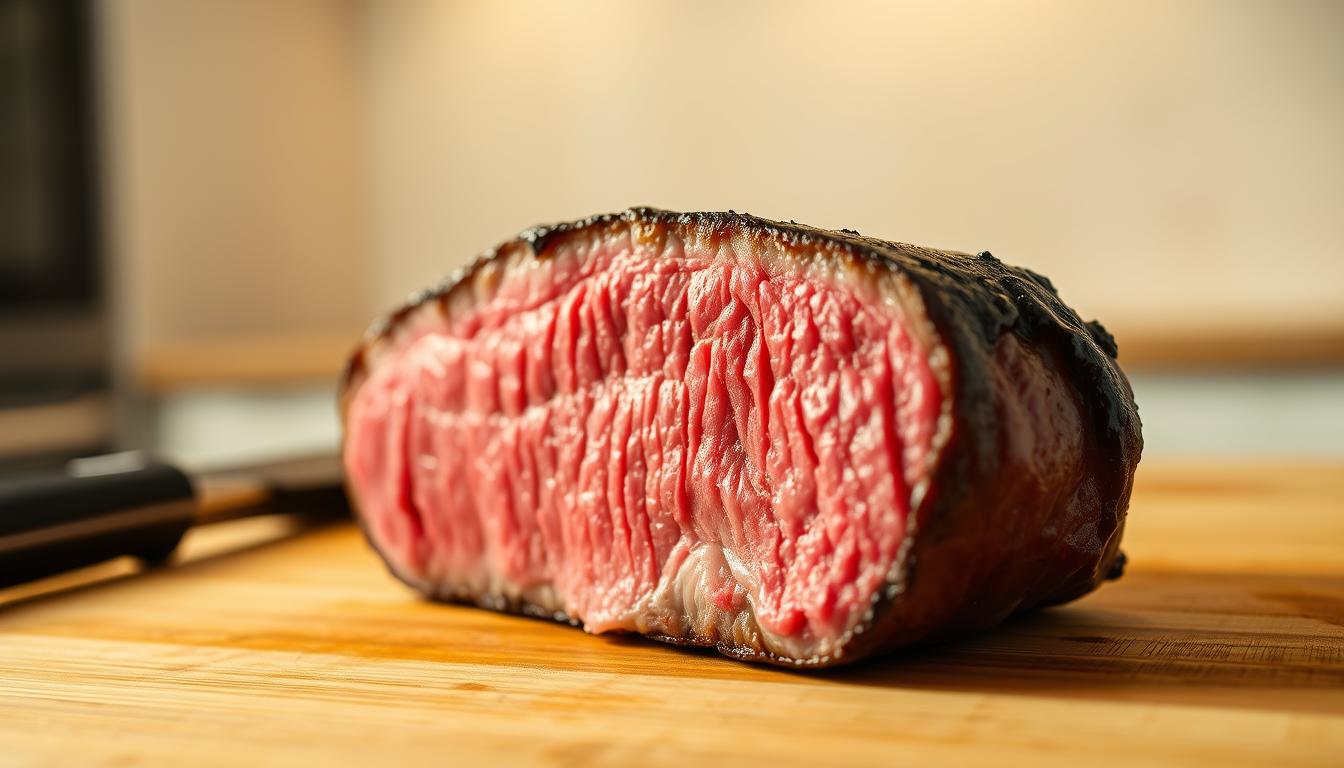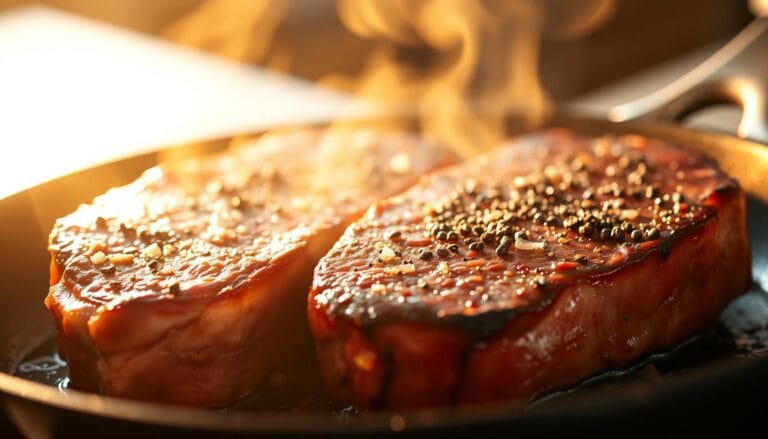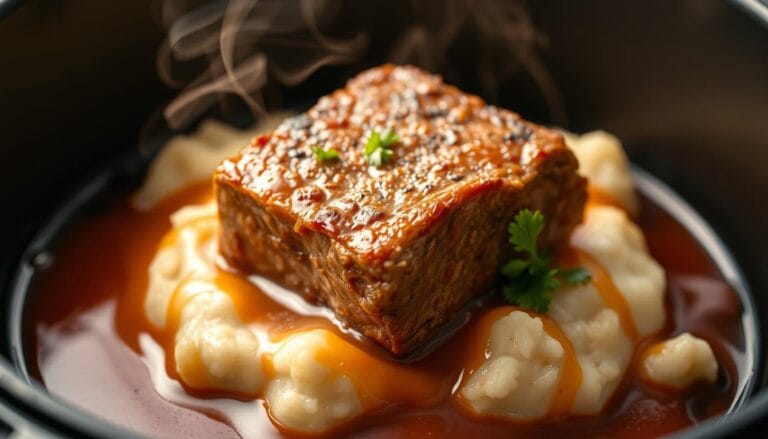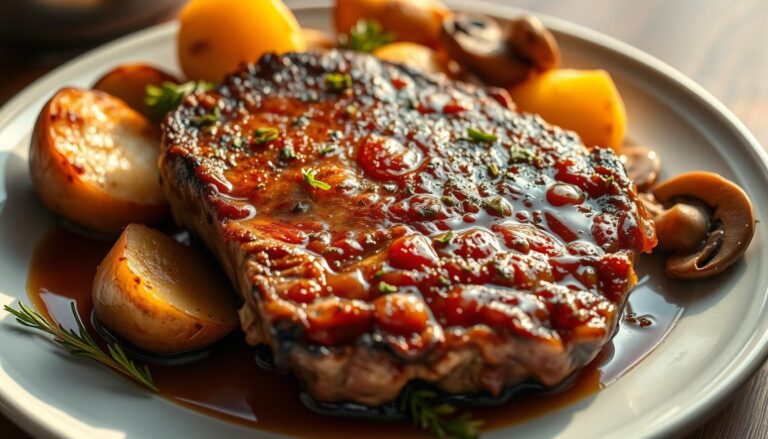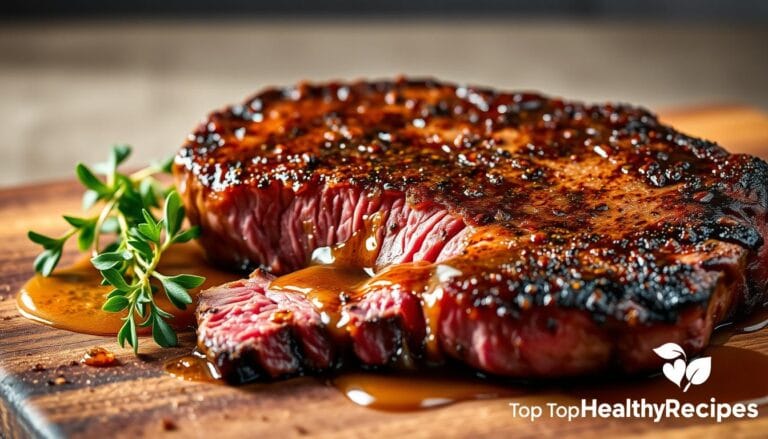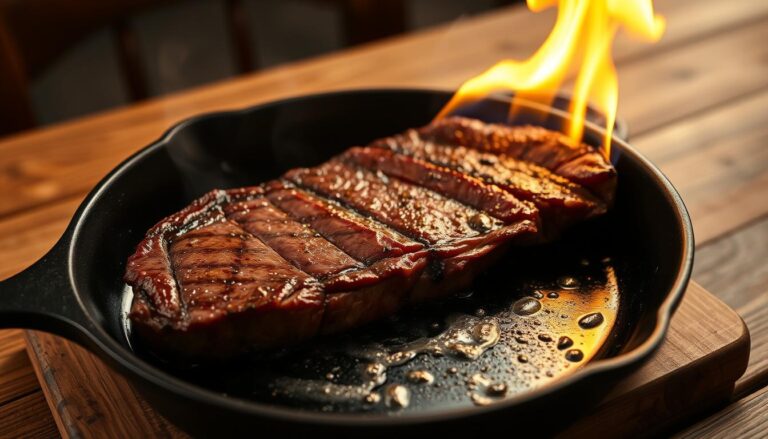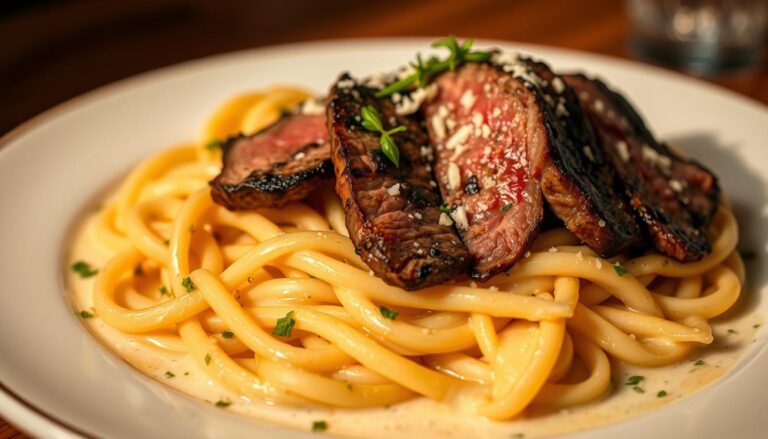What Temp Is Medium Rare Steak? Master the Perfect Cook at home
Table of Contents
What Temp Is Medium Rare Steak temp? at home Master the Perfect Cook
Cooking the perfect steak can be tough, aiming for medium rare is even harder. You might have had the disappointment of overcooking or undercooking your steak. This can ruin your meal.
Cooking a steak to a perfect medium rare temperature can be a challenging task for many home chefs. Achieving the ideal balance of flavors and textures is crucial to mastering this cooking technique. The correct temperature is essential to ensure a delicious dining experience without any disappointments.
What Temp Is Medium Rare Steak ? Mastering the art of cooking a medium rare steak at home requires precision and care. Achieving the ideal balance of flavors and textures is crucial to ensuring a delightful dining experience. Cooking the steak to the correct temperature is essential to avoid any disappointments and savor the perfect meal.
Knowing the right internal temperature is key for a deliciously cooked medium rare steak. Whether you’re new to cooking or have years of experience, the right temperature is essential. It ensures your steak turns out great every time. A perfect pink center with a tasty crust is what many steak lovers dream of.
Key Takeaways
- Learn the ideal internal temperature range for a medium rare steak.
- Discover proper measurement techniques for accurate doneness.
- Explore various cooking methods to achieve a perfectly cooked steak.
- Understand food safety considerations when cooking steak.
- Get expert tips to elevate your steak cooking skills.
Understanding Steak Doneness Levels
Knowing the different steak doneness levels is key to getting a perfect medium rare steak temperature. These levels range from rare to well-done, each with its own traits and cooking needs.
The United States Department of Agriculture (USDA) sets the standard for meat doneness. Their guidelines help ensure steaks are cooked to a safe temperature and to the desired doneness.
The USDA Guidelines for Meat Doneness
The USDA divides steak doneness into five levels: rare, medium rare, medium, medium well, and well-done. Each level has a specific internal temperature range.
- Rare: 120°F – 130°F
- Medium Rare: 130°F – 135°F
- Medium: 140°F – 145°F
- Medium Well: 150°F – 155°F
- Well-Done: 160°F and above
Importance of Cooking Temperatures
Cooking temperatures are key for both taste and safety. Cooking your steak to the right temperature kills harmful bacteria, making it safe to eat.
Using a thermometer is the best way to check your steak’s internal temperature. This is very important for medium rare steak, as the temperature range is narrow.
Common Misconceptions
Many people think cutting into the steak is the best way to check its doneness. But this method loses juices and doesn’t accurately show the steak’s internal temperature.
Another mistake is relying only on cooking time without considering the steak’s thickness. The steak’s thickness greatly affects cooking time. Ignoring this can lead to an overcooked or undercooked steak.
To get the perfect medium rare steak temperature, it’s important to know these guidelines and avoid common mistakes. This way, you’ll always have a perfectly cooked steak, with a temperature that’s just right – answering the question, “what temp is medium rare” with confidence.
What Is Medium Rare?
For steak lovers, medium rare is often considered the ideal doneness. But what does it really mean? A medium rare steak has a warm red center. It’s slightly firmer than rare but very tender and juicy.
Definition of Medium Rare Steak
A medium rare steak is cooked to an internal temperature that’s warm throughout. It has a significant amount of red color in the center. This doneness level is achieved when the steak is cooked to an internal temperature of about 130°F to 135°F (54°C to 57°C). It ensures the steak remains juicy and flavorful.
Visual Indicators of Doneness
To determine if your steak is medium rare, look for visual indicators. A medium rare steak typically has a warm red center and a hint of pink towards the edges. The exterior should be cooked to a nice brown crust, known as the Maillard reaction. This enhances the flavor and texture.
Tactile Cues for Perfect Medium Rare
Experienced chefs often use the touch test to determine the doneness of a steak. For medium rare, the steak should feel firm, yet yielding to pressure. It’s like the flesh at the base of your thumb when you touch your thumb to your index finger. This tactile cue helps you develop an intuitive sense of doneness that complements temperature readings.
The Perfect Temperature for Medium Rare Steak
To cook the perfect medium rare steak, knowing the ideal temperature is key. The temperature you choose can greatly affect the steak’s tenderness and flavor. A wrong choice can make the steak tough and overcooked.
Ideal Internal Temperature Range
The perfect internal temperature for a medium rare steak is between 130-135°F (54-57°C). This range ensures the steak is tender and full of flavor. Cooking to this temperature keeps the steak juicy and its natural texture intact.
- The lower end of the range (130°F) is ideal for those who prefer their steak slightly more red.
- The higher end (135°F) is better for those who prefer a hint of pink but not red.
Temperature Variations by Cooking Method
Different cooking methods might need slight temperature adjustments. For example:
- Grilling: Aim for the lower end of the range (around 130°F) because of carry-over cooking.
- Sous Vide: Cook directly to the desired temperature without worry about carry-over cooking.
- Pan-Searing: Aim for the middle of the range (around 132-133°F) for the best results.
Importance of Temperature Accuracy
Temperature accuracy is vital when cooking steak. Small temperature changes can greatly affect the final result. Using a meat thermometer ensures your steak is cooked to the correct temperature. This is critical for medium rare, as the difference between rare and medium is small.
By following these temperature guidelines, you’ll master cooking the perfect medium rare steak every time.
How to Measure Steak Temperature
Cooking a steak to medium rare is more than timing. It’s about precise temperature control. You need to measure the steak’s internal temperature accurately.
Best Tools for Measuring Internal Temperature
The right thermometer is key for steak temperature. You can choose from instant-read digital, wireless smart, or dial thermometers. Instant-read digital thermometers are fast and accurate. They quickly tell you if your steak is at the right medium rare temperature of 130°F to 135°F (54°C to 57°C).
Think about how accurate you need the thermometer to be and how easy it is to use. Wireless smart thermometers let you monitor your steak’s temperature from a distance. This is great for keeping an eye on your steak without constantly checking it.
Inserting the Thermometer Correctly
To get an accurate reading, insert the thermometer into the right spot. Aim for the thickest part of the meat, avoiding fat or bone. For most steaks, this means the center. Be careful with thin steaks to avoid touching the thermometer to the pan or grill.
- Identify the thickest part of the steak.
- Avoid inserting the thermometer into fat or near bones.
- For thin steaks, be cautious of the thermometer touching the pan or grill surface.
Reading Temperature: What to Look For
Wait for the thermometer reading to stabilize. For digital thermometers, this is quick. Look for a temperature between 130°F and 135°F (54°C to 57°C) for medium rare. Remember, the steak’s temperature will rise a bit after it’s removed from heat.
It’s important to understand how to read the temperature. With a digital thermometer, wait for a steady reading. If the temperature keeps changing, wait until it stops before deciding.
Cooking Techniques for Medium Rare Steak
Cooking a medium rare steak is an art. It requires choosing the right method for your tools and taste. Each technique has its own benefits for achieving the perfect doneness.
Grilling Method for Medium Rare
Grilling steaks adds a smoky taste and a charred outside. To grill a steak to medium rare, use both direct and indirect heat. First, sear the steak over high heat for a crust. Then, move it to a cooler area to cook it to the right temperature. The best grill temperature for medium rare is 400°F to 450°F (200°C to 230°C).
Sous Vide Cooking for Precise Control
Sous vide cooking seals the steak in a bag and cooks it in a water bath. This method offers exact control over the cooking temperature. For medium rare, set the water bath between 130°F to 135°F (54°C to 57°C). After cooking, sear the steak in a hot pan for a crust.
Pan-Searing: Achieving the Ideal Crust
Pan-searing is great for a flavorful crust on your steak. To pan-sear, preheat your pan to a high temperature and add oil. Dry the steak before cooking for a better crust. Cook the steak for a few minutes on each side until it’s medium rare. Use a thermometer to check the internal temperature, which should be between 130°F to 135°F (54°C to 57°C).
Tips for Achieving Medium Rare Perfection
Many people aim to cook a perfect medium rare steak. It takes knowledge, the right techniques, and practice. To improve your steak cooking, it’s key to know what makes a medium rare steak great.
Resting Period After Cooking
Letting your steak rest after cooking is very important. This step, lasting 5 to 10 minutes, helps the juices spread evenly. If you cut into the steak too soon, the juices will spill out, making it dry.
Resting Tips:
- Use this time to prepare your sides or sauces.
- Keep the steak in a warm place, but not on the cooking surface.
- Don’t tent the steak with foil unless it’s losing heat too quickly.
Carry-Over Cooking Explained
Carry-over cooking is when the steak’s temperature rises after it’s off the heat. This is because the hot outside layers warm the inside. Knowing this helps you cook to the perfect medium rare. Remove the steak when its temperature is 5-7°F lower than your target.
| Target Temperature | Remove at Temperature |
|---|---|
| 130°F – 135°F | 123°F – 128°F |
| 135°F – 140°F | 128°F – 133°F |
Preheating Your Cooking Surface
Preheating your cooking surface is essential for a good sear and even cooking. A hot surface cooks the steak evenly and adds flavor. Let your surface heat up for 10-15 minutes before cooking. Test the heat by dropping water; if it sizzles, it’s ready.
Mastering these techniques will help you achieve medium rare perfection. Remember, practice is key. Don’t get discouraged by early attempts. With time, you’ll get better at cooking juicy and flavorful steaks.
Choosing the Right Cut of Steak
Finding the perfect medium rare steak starts with picking the right cut. The cut you choose greatly affects the taste and texture of your steak. It’s important to know which cuts are best for medium rare cooking.
Best Cuts for Medium Rare Preparation
Some steak cuts are better for medium rare because of their fat and muscle. Ribeye, strip steak, filet mignon, and porterhouse are top picks. The ribeye, for example, has lots of marbling. This makes it taste great and stay tender when cooked to medium rare.
Chef Gordon Ramsay says, “The ribeye is a cut that, when cooked right, is just sublime.”
“A good steak is not just about the cut, it’s about how you cook it. For medium rare, you want a cut that’s going to stay juicy and flavorful.”
Strip steak is a good mix of tenderness and flavor. Filet mignon is tender but needs careful cooking to stay delicate. Porterhouse steaks have both a strip steak and a tenderloin, making them a great choice.
Grading of Steaks: What to Know
The USDA grading system helps you know the steak’s quality. The grades Prime, Choice, and Select are what matter most. Prime steaks are the highest quality, with lots of marbling for richer flavor and tenderness.
Choice steaks are also high quality but have less marbling. Select steaks are leaner and may be less tender but can be a good choice for a leaner cut.
Price vs. Quality: Finding Balance
The price of steak often shows its quality. But, you can find a balance. For special times, spending on a Prime cut might be worth it. For everyday meals, a well-cooked Choice or Select cut can be great and cheaper.
Remember, the quality of the steak is not just about the grade but also how it’s cooked. Cooking your steak to the perfect medium rare temperature of 130°F – 135°F (54°C – 57°C) can make any cut taste amazing.
The best cut for you depends on your taste, budget, and cooking skills. By picking the right cut and cooking it to the perfect medium rare, you can make your steak dinner better.
Seasoning Your Medium Rare Steak
Getting the perfect medium rare steak is more than just the right temperature. Seasoning is key. It brings out the steak’s natural flavors, making each bite special.
Essential Seasoning Tips
For seasoning a medium rare steak, keep it simple. Salt and pepper are a classic choice. But, when you add them matters. Salt should be applied early so the meat can soak up the flavor.
Season your steak with salt and pepper 30 minutes to an hour before cooking. This lets the seasonings get into the meat, boosting its taste. You can also add garlic powder, paprika, or herbs for more flavor.
The Role of Marinades
Marinades can add flavor, but use them wisely. A good marinade enhances the steak’s taste, but too strong can overpower it. For a medium rare, a light marinade is best.
A simple marinade of olive oil, garlic, and herbs like thyme or rosemary works well. Avoid acidic marinades, like those with citrus or vinegar, as they can make the steak taste sour.
Fresh Herbs and Flavor Pairings
Fresh herbs bring a bright, fresh taste to your steak. Herbs like rosemary, thyme, and parsley are popular. Compound butters, made with softened butter and herbs, add extra flavor.
| Herb | Flavor Profile | Pairing Suggestions |
|---|---|---|
| Rosemary | Piney, aromatic | Pairs well with garlic, ideal for a classic steak flavor |
| Thyme | Mild, slightly minty | Complements a variety of flavors, works well with lemon |
| Parsley | Fresh, green | Adds a bright flavor, pairs well with garlic butter |
“The key to a great steak is not just the quality of the meat, but how you prepare it. Seasoning is a critical step that can make your steak outstanding.”
By following these seasoning tips and trying different herbs and flavors, you can elevate your medium rare steak. Enjoy a truly exceptional dining experience.
Cooking Times and Techniques
Cooking a steak to medium rare is more than just about temperature. It’s also about timing. Knowing the right cooking times and techniques can make your steak taste better. We’ll look at what affects cooking time and how to adjust for different steaks.
General Cooking Time Guidelines
Grilling a medium rare steak takes 4-6 minutes per side for a 1-inch thick steak. Pan-searing needs 3-4 minutes per side. But remember, these are just starting points. Actual times can change.
Thickness Considerations
The thickness of your steak changes cooking time. A 1-inch steak cooks faster than a 2-inch one. Add 1-2 minutes for every half-inch of extra thickness.
Adjustments for Different Cuts
Steak cuts can affect cooking time. For example, a ribeye cooks quicker than a filet mignon because of its fat. This is because of differences in marbling and density.
| Steak Thickness | Grilling Time (per side) | Pan-Searing Time (per side) |
|---|---|---|
| 1 inch | 4-6 minutes | 3-4 minutes |
| 1.5 inches | 6-8 minutes | 5-6 minutes |
| 2 inches | 8-10 minutes | 7-8 minutes |
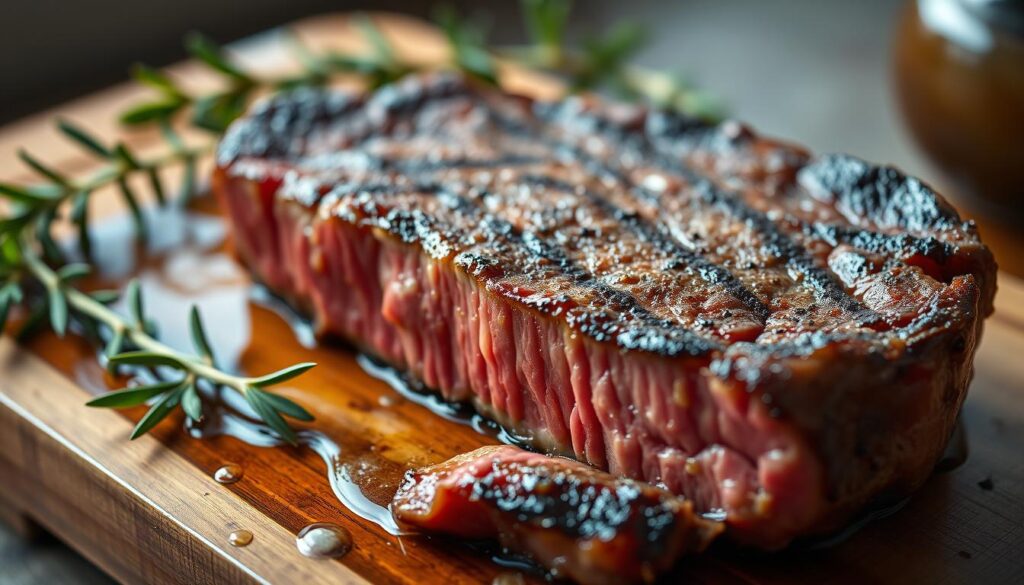
Avoiding Common Mistakes
Cooking a medium rare steak is more than just following a recipe. It’s about avoiding common mistakes that can ruin your meal. Even skilled cooks can mess up and not get the perfect steak. Knowing these mistakes helps you cook a great steak every time.
Overcooking: The Silent Killer
Overcooking is a big mistake when trying for a medium rare steak. It often comes from being afraid of undercooking. To avoid this, know the medium rare steak temperature is between 130°F and 135°F (54°C to 57°C). A thermometer is key to getting this right.
Another trick is to take the steak off the heat when it’s a bit cooler than you want. It will cook a bit more after it’s off the heat.
Misjudging Doneness Without a Thermometer
Just looking or feeling the steak to see if it’s done can be wrong. Even top chefs use thermometers for accuracy. The medium rare steak temp is a better guide than how it looks or feels. Without a thermometer, you might end up with a steak that’s too raw or too cooked.
- Use a thermometer to check the internal temperature.
- Insert the thermometer into the thickest part of the steak, avoiding any fat.
- Take multiple readings to ensure accuracy.
Ignoring Resting Time
Not letting the steak rest after cooking can make it less juicy. Even if you hit the medium rare steak temperature perfectly, skipping rest time can affect the steak’s tenderness. Letting it rest for 5 to 10 minutes before serving makes it more tender and flavorful.
Food Safety Considerations
Cooking steak to the perfect medium rare doesn’t mean you have to worry about safety. When you’re cooking medium rare steak, knowing about food safety is key. This ensures a great and safe dining experience.
USDA Recommendations for Beef Safety
The USDA says to cook whole cuts of beef to 145°F and then rest for 3 minutes for safety. But, many chefs and food experts say whole muscle cuts are safe at medium rare. This is between 130°F to 135°F, if you handle it right.
It’s all about understanding that searing kills surface bacteria. But, internal bacteria in whole muscle cuts are usually not a problem. So, it’s important to follow good handling and cooking steps.
Recognizing Spoiled Meat
Before you cook, make sure the meat isn’t spoiled. Look for these signs:
- A strong, bad smell
- A slimy feel
- Unusual color
If you see any of these, it’s safer to throw the meat away.
The Importance of Safe Cooking Practices
Safe cooking practices are essential to avoid foodborne illnesses. This includes:
- Storing and handling raw meat correctly
- Keeping it away from other foods and utensils
- Cooking to the right temperature
- Using a thermometer for exactness
Also, remember that ground beef should never be cooked medium rare. This is because of the risk of inside contamination.
By following these food safety tips, you can enjoy your medium rare steak safely. The ideal temperature for medium rare steak is between 130°F to 135°F. When cooked right, it’s both safe and delicious.
Alternative Cooking Methods
Exploring new ways to cook can lead to a perfect medium rare steak temperature. These methods add variety and solve problems when you can’t use your usual tools.
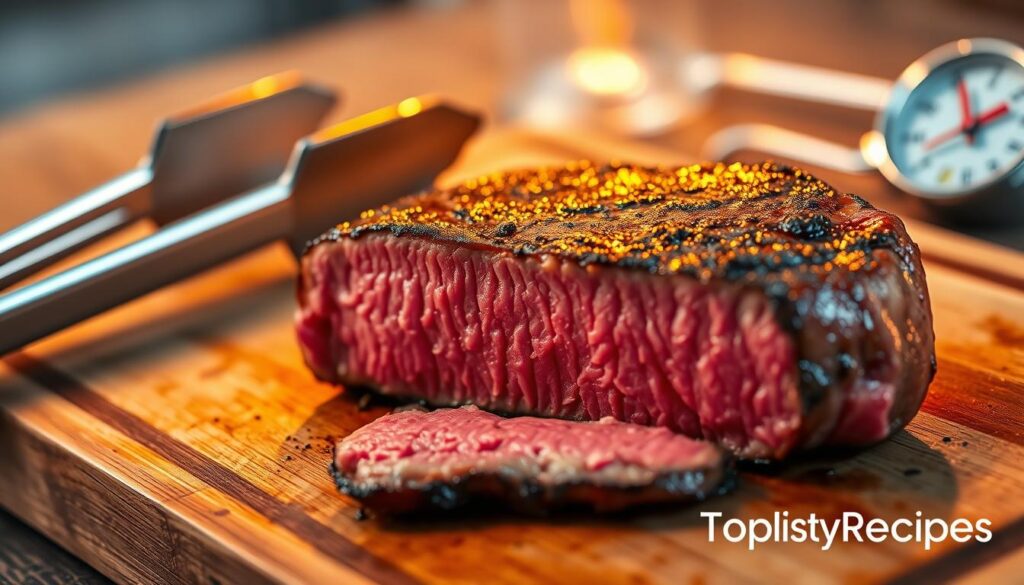
Smoking Steak for Unique Flavor
Smoking steak brings a rich flavor while keeping the center medium rare. It’s important to keep your smoker at 225°F to 250°F (110°C to 120°C). Use a thermometer to check the steak’s internal temperature. It should be 130°F to 135°F (54°C to 57°C) for medium rare.
Smoking is great for thicker steaks. It makes the meat tender and adds a smoky taste.
Indoor vs. Outdoor Cooking
Choosing between indoor and outdoor cooking depends on what you like, your gear, and the weather. Outdoor grilling gives a charred look that’s hard to get indoors. But indoor cooking, like using a skillet or broiler, lets you control the heat better.
When cooking indoors, make sure your surface is hot. For a skillet, heat it until it’s almost smoking before adding the steak. For broiling, set your broiler to the highest heat. This initial heat helps sear the steak, keeping it juicy and flavorful.
Broiling for a Quick Finish
Broiling is fast and effective for a medium rare steak temp. Place the steak on a broiler pan, about 3-4 inches from the heat. Cook for 3-4 minutes on each side, based on the steak’s thickness and your desired doneness.
Broiling works best if you don’t overcrowd the pan and watch the steak closely. It cooks quickly, so it’s easy to overcook it if you’re not careful.
Trying these alternative cooking methods can help you make a perfect medium rare steak temperature every time. Whether you’re smoking, cooking indoors, or broiling, the key is to keep an eye on the temperature and adjust as needed.
Pairing Wines with Medium Rare Steak
Pairing wine with your medium rare steak can make your meal better. A good wine choice complements the steak’s rich flavors. It also makes the meal more enjoyable.
Choosing the right wine for your steak depends on several things. The steak type, its doneness, and seasonings all matter. For a medium rare steak, some wines pair better than others.
Best Wine Varietals for Red Meat
Red wines usually go well with medium rare steak. Their tannins match the steak’s charred flavors. Here are some top wine choices for red meat:
- Cabernet Sauvignon: It has bold tannins and tastes of dark fruit, spice, and vanilla.
- Malbec: It offers plum and blackberry flavors with soft tannins, perfect for a smooth wine.
- Syrah/Shiraz: It has dark fruit flavors, peppery notes, and strong tannins, ideal for grilled steaks.
How to Choose the Right Wine
Choosing the right wine depends on several factors. Consider the steak cut, cooking method, and your taste. For example, a ribeye might go well with a full-bodied Cabernet Sauvignon. A filet mignon could pair better with a delicate Pinot Noir.
| Steak Cut | Recommended Wine | Key Characteristics |
|---|---|---|
| Ribeye | Cabernet Sauvignon | Full-bodied, tannic, dark fruit flavors |
| Filet Mignon | Pinot Noir | Light-bodied, elegant, red fruit flavors |
| New York Strip | Syrah/Shiraz | Robust, peppery, dark fruit flavors |
Proper Serving Temperatures for Wine
The serving temperature of wine affects its taste and pairing with steak. Red wines are usually served at room temperature. But, the ideal temperature is between 55°F to 65°F (13°C to 18°C).
Knowing the best wine varietals, how to choose based on steak and cooking, and serving temperatures can enhance your meal. Whether you’re enjoying a medium rare steak temp or trying different cooking methods, the right wine makes a big difference.
Sides That Compliment Medium Rare Steak
Pairing side dishes with medium rare steak can make a meal special. When your steak is cooked just right, between 130°F to 135°F, the right sides can make it even better.
Recommended Vegetables and Starches
Choosing the right vegetables and starches is key. Roasted veggies like asparagus, Brussels sprouts, or bell peppers add a nice contrast. For starches, try garlic mashed potatoes, roasted sweet potatoes, or wild rice pilaf. These not only go well with the steak but also add more flavor to your meal.
- Roasted asparagus with lemon butter
- Sautéed spinach with garlic
- Grilled or roasted bell peppers
- Garlic mashed potatoes
- Roasted sweet potatoes with rosemary
Creative Sauces and Toppings
Make your medium rare steak even better with creative sauces and toppings. Try a compound butter with herbs or a pan sauce made from the steak’s drippings and red wine. Classic sauces like bèarnaise or peppercorn can also add a lot to your dish.
- Compound butter with herbs
- Pan sauce with red wine reduction
- Bèarnaise sauce
- Peppercorn sauce
Presentation Tips for Your Plate
The way you present your dish matters a lot. After cooking your steak to perfection, let it rest before slicing it against the grain. Then, place the steak on the plate with your chosen sides and sauces in a way that looks good. Think about the colors and textures to make your dish look like it came from a restaurant.
- Rest the steak before slicing
- Slice against the grain
- Arrange sides and sauces thoughtfully
- Balance colors and textures on the plate
Conclusion: Mastering Medium Rare Steak
Now you know how to cook a perfect medium rare steak. The ideal internal temperature is between 125°F to 130°F. For more steak cooking tips, visit tophealtyrecipes.com.
Key Takeaways
To get great results, use a thermometer to check the steak’s internal temperature. Choose the right cut of meat and don’t overcook it. Remember, Rare is 120°F, Medium-Rare is 125°F, and Medium is 135°F.
Experimenting with Flavor
As you get better at cooking medium rare steak, try new seasonings and marinades. Pair your steak with different wines and sides to make your meals even better.
Join the Medium Rare Community
Cooking the perfect medium rare steak is a journey. We’re glad you’re joining us. Share your experiences, tips, and favorite recipes with others to keep learning and improving.
FAQ
what temp is medium rare steak?
what temp is a medium rare steak?
What are the best cuts of steak for medium rare?
what is the internal temp for medium rare steak?
What is carry-over cooking, and how does it affect my steak?
How long should I let my steak rest after cooking?
Is medium rare steak safe to eat?
What are some common mistakes to avoid when cooking medium rare steak?
Can I achieve medium rare with different cooking methods?
What temperature should I use for sous vide cooking to achieve medium rare?
How do I know if my steak is spoiled before cooking?
What are some recommended wine pairings for medium rare steak?
What are some good side dishes to serve with medium rare steak?
How do I properly season my steak for medium rare?
What is the best way to achieve a good sear on my medium rare steak?
For more cooking tips, stay connected with us. We also recommend the cookbook Skinnytaste Simple: Easy, Healthy Recipes with 7 Ingredients or Fewer
For more Recipes about Steak ?
Did You try our recipe ?
There are no reviews yet. Be the first one to write one.
